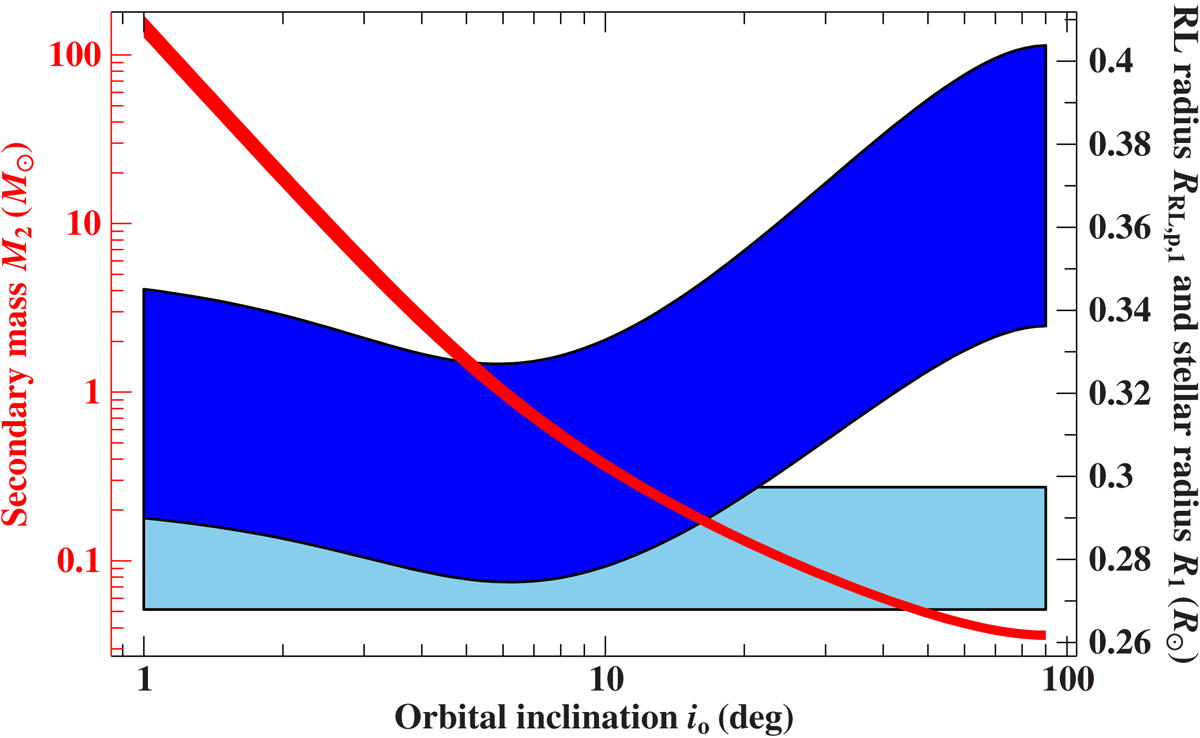Fig. 5.

Mass and RL radius as a function of orbital inclination. Left ordinate (red): mass of the unseen companion, M2, as a function of the orbital inclination, io. A mass of M1 = 0.21 ± 0.01 M⊙ for the visible component is used to numerically solve the binary mass function given in Eq. (3) for M2. Right ordinate (black-rimmed blue-shaded curves): comparison of the RL radius of the visible component at the pericenter passage based on Eq. (10), RRL, p,1 (dark blue), and the respective stellar radius, R1 (light blue), following from M1 and from the spectroscopically inferred surface gravity, ![]() (see Table 2; G is the gravitational constant). Physical conditions are met when the light blue band is below the dark blue band, that is, when the star is smaller than its RL radius. The widths of all shaded regions cover all involved 1σ uncertainties.
(see Table 2; G is the gravitational constant). Physical conditions are met when the light blue band is below the dark blue band, that is, when the star is smaller than its RL radius. The widths of all shaded regions cover all involved 1σ uncertainties.
Current usage metrics show cumulative count of Article Views (full-text article views including HTML views, PDF and ePub downloads, according to the available data) and Abstracts Views on Vision4Press platform.
Data correspond to usage on the plateform after 2015. The current usage metrics is available 48-96 hours after online publication and is updated daily on week days.
Initial download of the metrics may take a while.


